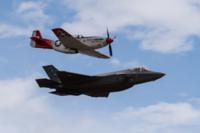Receiving the Medal of Honor requires the recipient to commit to an action that risks their life "above and beyond the call of duty." This means no one involved would blame the person for not performing the action.
Sometimes, this means taking on an enemy while outnumbered; sometimes, it means rescuing a battle buddy from certain death. For U.S. Army Staff Sgt. George Hall, it meant both -- only, the person he rescued was himself, and he had to cut off his own leg to do it.
George John Hall was a native of Massachusetts who joined the Army long before the United States entered World War II. He first served in the National Guard in his home state while still a teenager, but he was discharged in 1940 and entered the active-duty Army.
The first part of his Army career was spent training in Panama and then later Fort Hamilton, which is today the only active-duty military installation in the New York City Metro area. Though the Japanese attack on Pearl Harbor took Americans overseas by the hundreds of thousands, Hall managed to stay stateside until 1944, in time to take part in the Battle of Anzio on the Italian Peninsula.
The fighting in Italy had the effect of relieving some of the pressure on the Soviet Union in the east, tying up Axis defenders who might be used against the coming invasion of Normandy and causing the overthrow of Italian dictator Benito Mussolini.
Anzio was part of the Allies' effort to break a stalemate on the peninsula. Allied forces first landed in Italy in September 1943 and fought at a steady pace toward Rome. The Allies were stymied by the tough German defenses at Monte Cassino, the westernmost part of the Gustav Line.

To break the stalemate, British and American troops landed at Anzio, behind the Gustav Line, on Jan. 22, 1944. At the same time, Americans under Gen. Mark Clark attempted a breakout of Cassino to add pressure on the Germans -- except the invasion of Anzio almost failed. Within three days, the Allies were surrounded by 40,000 German troops.
The bloody Battle of Anzio lasted for five months. Hall was by then a staff sergeant in the 34th Infantry Division. His division had landed at Salerno and fought the Germans to the Gustav Line. After fighting near Monte Cassino, he and the 34th landed at Anzio, only to be surrounded.
On May 23, 1944, the division launched an offensive to break out of the encirclement, crush the Germans and race on to Rome. Hall was leading Bravo Company across open terrain when the unit suddenly found itself pinned down by enemy machine-gun fire and snipers.
Hall, in the front of the unit and knowing they wouldn't last long under this kind of fire, volunteered to take out all three machine gunners. He crawled along for 60 yards, with the furrows of a farmer's plowed field as his only cover. Despite the steady enemy machine gun, he was able to toss four grenades into the nest and take it out.
Two of the Germans inside the machine gun nest were dead. Four were alive but stunned. Hall took them prisoner and ordered them to crawl back to the Allied lines. The Germans complied. Hall had used all of his grenades assaulting the machine gun, but luckily found a stash of German "potato masher"-style grenades in the nest.
Every time the next machine gun nest fired a burst at him, Hall chucked a few grenades at it. The Germans would throw some of them back, but eventually, Hall threw more than they could handle. With five dead and five more prisoners heading back to the Allied lines, Hall began the low crawl to the third nest.
As he moved, the third Nazi gun nest fired at him frantically in an attempt to stop his rampage. That's when enemy artillery began raining down on Hall as he crawled through the field. One of the incoming shells tore his right leg to shreds and injured his left foot. His right leg was held on by just two tendons.
Knowing he could no longer move to kill the third enemy gun, Hall turned around to crawl the 75 yards back to his original spot in the field, but the pain was overwhelming. He was too far away for a medic to hear his cries for help, and the enemy was still firing at him. He lay there and considered what to do.
He decided the leg would have to go before the enemy came out and finished him off entirely. Hall cut off his leg to relieve some of the pain involved, allowing him to continue crawling to safety. He eventually made it, and Army medics treated him and sent him to a field hospital. Hall's only complaint was that he didn't get the third enemy position.

Hall would survive the war and head home, returning to his onetime home in New York City. He would have to return to Massachusetts on April 6, 1945, however, to be presented with the Medal of Honor for his actions that cleared the way for his unit to move forward at Anzio.
Unfortunately, complications from wounds that sent him home from Italy and for which he received the Medal of Honor ended Hall's life in 1946, at just 26 years old.
-- Blake Stilwell can be reached at blake.stilwell@military.com. He can also be found on Twitter @blakestilwell or on Facebook.
Want to Learn More About Military Life?
Whether you're thinking of joining the military, looking for post-military careers or keeping up with military life and benefits, Military.com has you covered. Subscribe to Military.com to have military news, updates and resources delivered directly to your inbox.
















